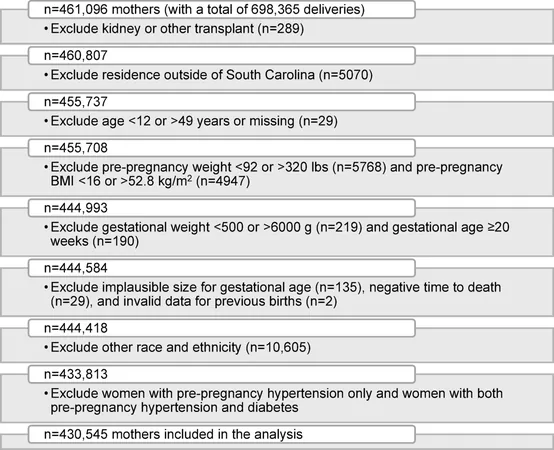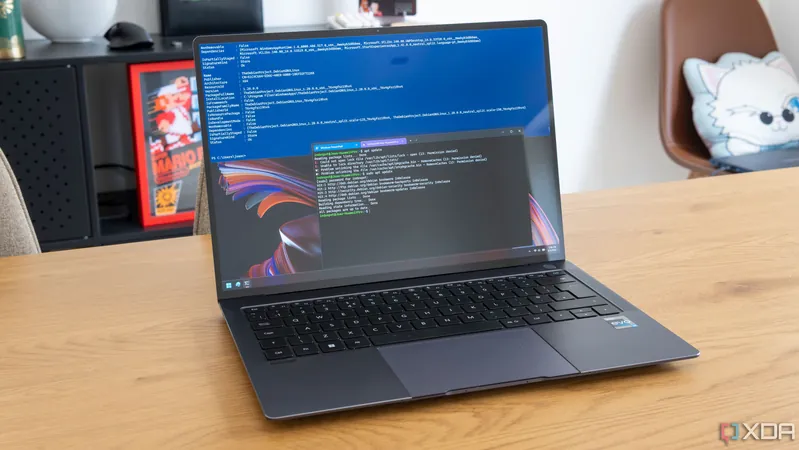
James Webb Telescope Sheds Light on the Hubble Constant: A Breakthrough in Cosmic Expansion Debate
2025-05-27
Author: Yu
Scientists Tackle the Universe's Expansion Mystery
For over a decade, astronomers have been perplexed by a paradox: the universe expands, but the rate of that expansion appears to vary depending on whether we look back to its infancy or observe it today. This discrepancy has posed significant challenges to our understanding of cosmic evolution and raised questions about the accuracy of the widely accepted Standard Model of the universe.
Breakthrough Data from the James Webb Space Telescope
Thanks to the cutting-edge James Webb Space Telescope (JWST), researchers from the University of Chicago have gathered compelling new data that may resolve this long-standing conflict. Professor Wendy Freedman, a pivotal figure in this debate, remarked, "This new evidence suggests that our Standard Model is still robust." Her findings indicate that the Hubble constant, which describes the universe's expansion rate, could be more consistent than previously thought.
Two Different Routes to Measure Cosmic Expansion
To calculate the universe's expansion, scientists typically rely on two primary methods. The first involves analyzing the faint glow of radiation from the Big Bang, known as the cosmic microwave background. This ancient light reveals the conditions of the early universe.
Freedman, however, focuses on the second method, which measures the universe's current expansion. Paradoxically, this approach — observing the brightness of nearby supernovae and other stars — is far more challenging, as it requires precise distance measurements.
Supernovae: Cosmic Beacons of Distance
One technique involves monitoring supernovae during their peak brightness to estimate distances, enhanced by Freedman’s pioneering research on red giant stars and carbon stars. Yet, scientists face numerous hurdles. They must account for cosmic dust and variations in luminosity that can obscure light across vast distances.
A Major Leap Forward with Webb's Advanced Technology
With the launch of the JWST in 2021, researchers have significantly improved their distance measurements. Freedman reported, "We've more than doubled our sample size for calibrating supernovae, leading to significant statistical improvements." Her latest calculations estimate the Hubble constant at 70.4 kilometers per second per megaparsec, with a confidence of plus or minus 3%. This new figure aligns more closely with cosmic microwave background measurements, which previously suggested a value of 67.4.
Enhanced Resolution and Sensitivity Opens New Doors
The JWST boasts four times the resolution of the Hubble Telescope and is approximately ten times more sensitive. This allows it to distinguish individual stars more clearly and provides a more accurate depiction of distant cosmic phenomena. Co-author Taylor Hoyt noted, "The James Webb Space Telescope is magnificent for measuring distances to galaxies with precision we've never had before."



 Brasil (PT)
Brasil (PT)
 Canada (EN)
Canada (EN)
 Chile (ES)
Chile (ES)
 Česko (CS)
Česko (CS)
 대한민국 (KO)
대한민국 (KO)
 España (ES)
España (ES)
 France (FR)
France (FR)
 Hong Kong (EN)
Hong Kong (EN)
 Italia (IT)
Italia (IT)
 日本 (JA)
日本 (JA)
 Magyarország (HU)
Magyarország (HU)
 Norge (NO)
Norge (NO)
 Polska (PL)
Polska (PL)
 Schweiz (DE)
Schweiz (DE)
 Singapore (EN)
Singapore (EN)
 Sverige (SV)
Sverige (SV)
 Suomi (FI)
Suomi (FI)
 Türkiye (TR)
Türkiye (TR)
 الإمارات العربية المتحدة (AR)
الإمارات العربية المتحدة (AR)